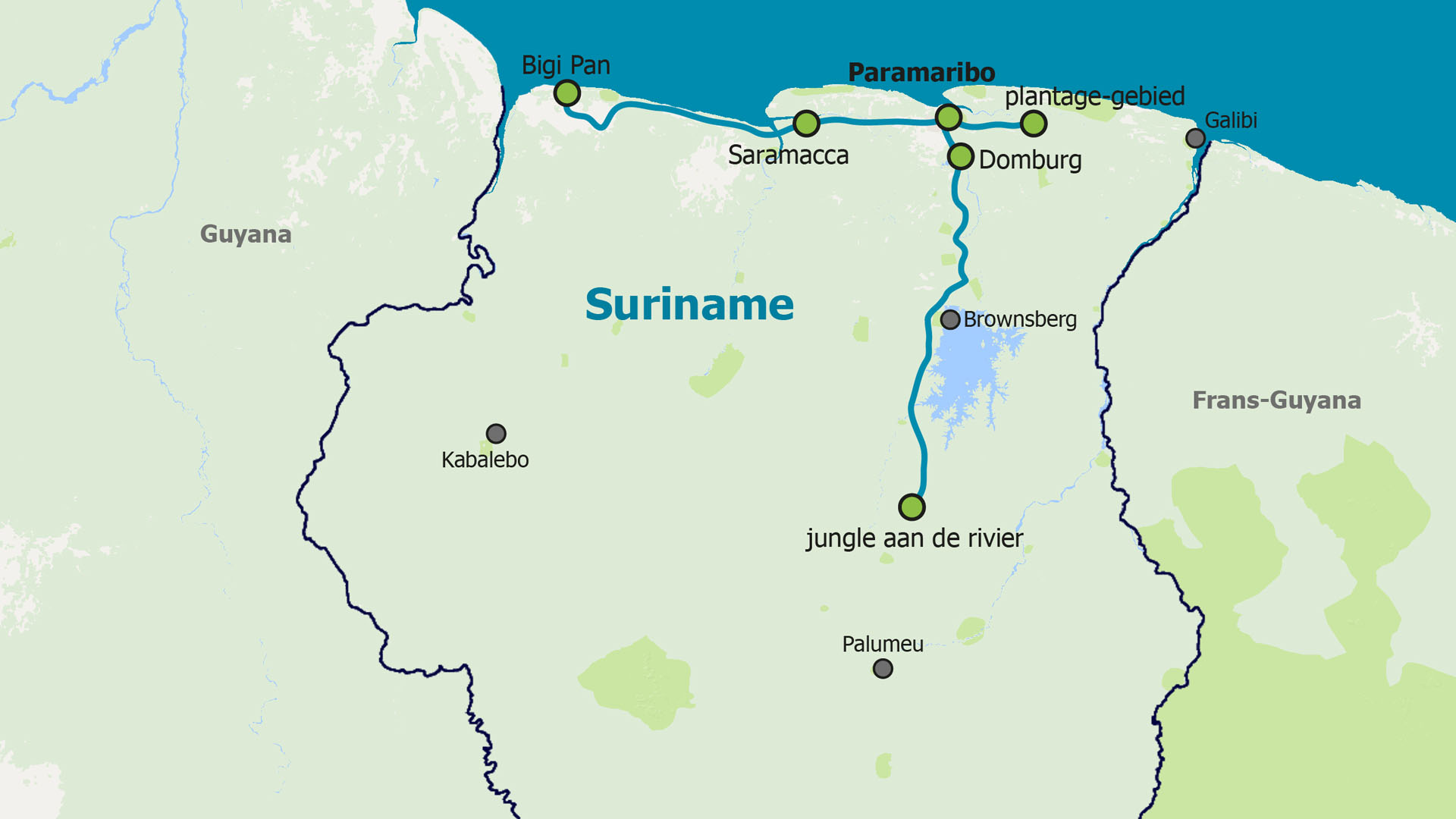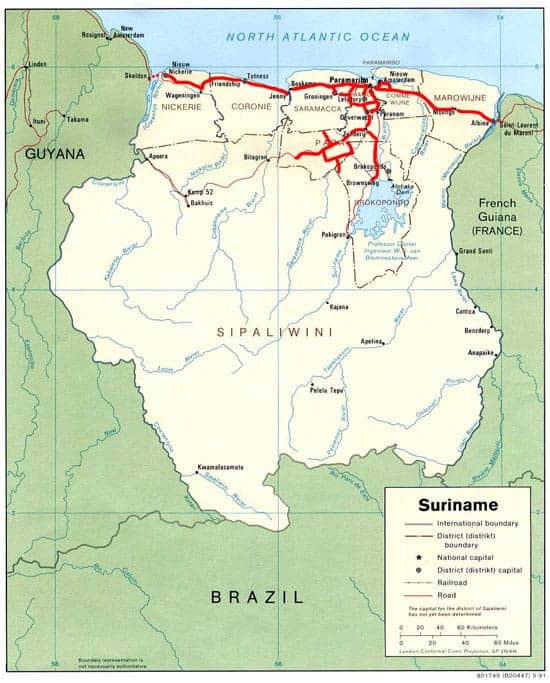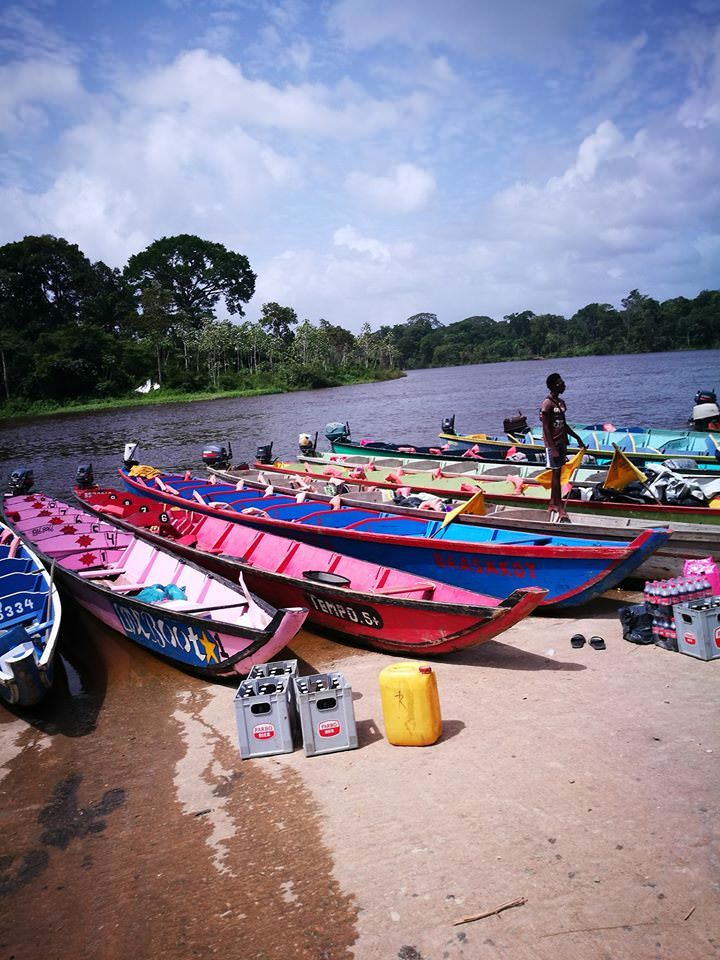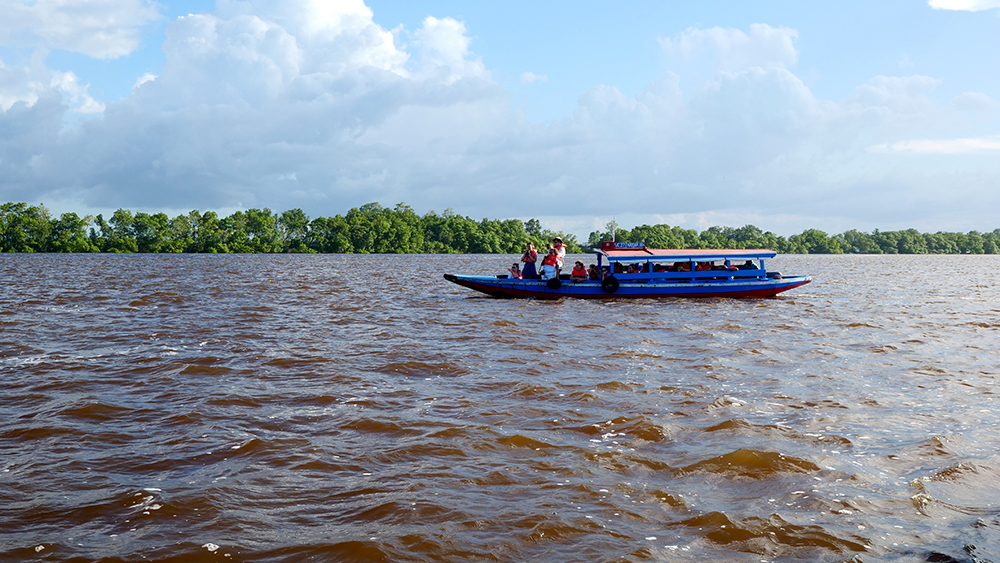So, you’re thinking about going on a self-drive tour of Suriname? That’s awesome! There’s a lot to explore in this hidden gem of South America. Whether you’re a nature lover, history buff, or simply want to immerse yourself in a different culture, Suriname has something for everyone. In this article, we’ll take you through some essential tips and routes to help you plan the perfect self-drive adventure.
First things first, you need to decide on your itinerary. Suriname is packed with diverse landscapes and attractions, so it’s important to prioritize what you want to see and do. One popular route is to start in the capital city of Paramaribo and make your way to the Central Suriname Nature Reserve. This UNESCO World Heritage Site is a must-visit for nature enthusiasts, with its pristine rainforests, ancient granite formations, and stunning waterfalls.
Another route you might consider is exploring the coastal region known as Commewijne. This area is rich in historical and cultural sites, such as the former plantations and the picturesque Fort Nieuw Amsterdam. And of course, no trip to Suriname would be complete without visiting the magnificent Brownsberg Nature Park, where you can go hiking, spot wildlife, and enjoy breathtaking views of the Brokopondo Reservoir.
In this article, we’ll delve deeper into these routes and provide you with some essential tips to make your self-drive tour of Suriname a memorable experience. So buckle up and get ready to embark on an adventure of a lifetime! Suriname, located on the northeastern coast of South America, is a hidden gem waiting to be explored. With its diverse landscapes, rich cultural heritage, and vibrant cities, it offers a unique experience for those looking to embark on a self-drive tour. However, before you hit the road, it’s important to be well-prepared and informed. In this article, we will guide you through essential tips and routes to ensure a memorable and safe self-drive tour of Suriname.

Choosing the Right Vehicle
Considering the Terrain and Road Conditions
First and foremost, it’s crucial to consider the terrain and road conditions of Suriname. While major cities and highways have well-paved roads, some areas, especially in the interior and rural regions, may have unpaved or rough roads. Therefore, it is wise to choose a vehicle that is appropriate for these conditions.
Deciding on the Type of Vehicle: 4×4 or Sedan
To navigate through Suriname’s diverse landscapes with ease, you have the choice between a 4×4 or a sedan. A 4×4 vehicle, with its higher ground clearance and rugged capabilities, is recommended if you plan to explore remote and off-road areas. On the other hand, if you plan to stick to major highways and urban areas, a sedan would be more suitable.
Checking Vehicle Safety Features and Inspections
Before embarking on your self-drive tour, thoroughly inspect the vehicle for safety features and ensure it is in good working condition. Check the brakes, tires, headlights, and seat belts. It is also advisable to have regular maintenance checks during your trip to prevent any unexpected breakdowns or mishaps.
Understanding the Traffic Rules and Regulations
Familiarizing Yourself with Suriname’s Traffic Laws
To ensure a smooth and safe journey, familiarize yourself with Suriname’s traffic laws. Observe speed limits, stop signs, and traffic signals. Remember, in Suriname, driving is on the left-hand side of the road. Understanding and following these regulations will not only keep you safe but also prevent any run-ins with the local authorities.
Understanding Right-Hand Drive and Road Signage
If you are accustomed to driving on the right-hand side of the road, adjusting to Suriname’s left-hand drive may take some time. Take extra caution when changing lanes or making turns to avoid any accidents. Additionally, familiarize yourself with Suriname’s road signage to prevent confusion and navigate effectively.
Adapting to Suriname’s Driving Etiquette
Suriname has its own unique driving etiquette. Drivers in Suriname tend to be more relaxed and courteous compared to other countries. It is common for drivers to flash their headlights as a sign of courtesy when giving way. Practice patience and be considerate on the road to ensure a harmonious driving experience.

Obtaining the Necessary Permits and Documentation
Validating Your Driver’s License and International Driving Permit
To drive legally in Suriname, a valid driver’s license from your home country is required. Additionally, an International Driving Permit (IDP) is recommended as it helps overcome any language barriers and serves as a valid translation of your license. Ensure that your license is up to date and carry the necessary documents with you at all times.
Acquiring a Temporary Vehicle Importation Permit
If you plan to bring your own vehicle to Suriname, you need to obtain a Temporary Vehicle Importation Permit. This permit allows you to bring your vehicle into the country and is issued by the Customs and Excise Department. Make sure to have all the necessary paperwork and pay the required fees to avoid any complications.
Carrying Essential Travel Documents
Aside from your driver’s license and IDP, it is important to carry other essential travel documents. These may include your passport, travel insurance, vehicle registration, and proof of ownership. Storing these documents in a secure and easily accessible location will save you from unnecessary stress during your journey.
Planning Your Route and Itinerary
Researching Must-Visit Destinations and Attractions
Suriname offers a plethora of attractions that cater to different interests. Researching and identifying must-visit destinations and attractions beforehand will help you create a comprehensive and enjoyable itinerary. Explore the vibrant historic inner city of Paramaribo, discover the breathtaking beauty of Central Suriname Nature Reserve, or immerse yourself in the rich cultural heritage of Maroon communities.
Creating a Flexible and Realistic Itinerary
While it’s important to have an itinerary, it’s equally important to be flexible. Suriname’s charm lies in its unexpected discoveries and spontaneous adventures. Allow room for detours and impromptu stops as you drive through the country. This flexibility will allow you to fully immerse yourself in Suriname’s beauty and make the most of your self-drive tour.
Considering Overnight Stops and Rest Areas
Before setting off on your journey, plan for overnight stops and rest areas. Suriname offers a wide range of accommodations, from luxurious hotels in Paramaribo to cozy guesthouses in remote areas. Research and book accommodations in advance to secure your stay. Additionally, identify rest areas where you can take breaks, refuel, and refresh during long drives.

Packing Essentials for a Self-Drive Tour
Securing Important Travel Documents and Identification
Keeping your important travel documents and identification secure is paramount. Carry them in a waterproof and secure bag that is easily accessible but difficult for others to reach. Make copies of these documents and store them separately as a backup measure.
Carrying Sufficient Cash and Credit Cards
While credit cards are widely accepted in major cities, it is advisable to carry some cash for remote areas where card facilities may be limited. Additionally, inform your bank about your travel plans to avoid any payment issues or card suspensions.
Packing Adequate Clothing and Personal Items
Be mindful of the weather conditions in Suriname and pack accordingly. Include lightweight and breathable clothing suitable for the tropical climate, as well as comfortable shoes for any hiking or outdoor activities. Don’t forget essentials such as sunscreen, insect repellent, and any necessary medications.
Navigating Suriname’s Road Network
Using GPS and Offline Navigation Apps
To navigate Suriname’s road network efficiently, use a GPS or offline navigation app. These tools will help you stay on track and prevent getting lost. Ensure that you have downloaded the necessary maps and updates for offline use, as some areas may have limited or no internet connectivity.
Understanding Suriname’s Road Signage and Mileage Markers
Familiarize yourself with Suriname’s road signage and mileage markers to navigate effectively. Pay attention to speed limit signs, warning signs, and directional signs. The mileage markers along major highways will help you gauge distances and milestones during your journey.
Overcoming Language Barriers
While most Surinamese people speak Dutch, language barriers may still arise in remote areas or when dealing with local communities. Carry a basic phrasebook or an app that can help you communicate essential phrases in the local language, Sranan Tongo. This effort will go a long way in establishing rapport and receiving assistance when needed.

Safety Considerations for Self-Drive Tours
Taking Precautions against Theft and Break-ins
As with any travel destination, taking precautions against theft and break-ins is essential. Park in well-lit and secure areas, lock your doors and windows, and never leave valuables unattended in your vehicle. Be vigilant, especially in tourist areas, and trust your instincts when it comes to personal safety.
Ensuring Personal Safety during Night Drives
Night drives can have unique challenges, so exercise caution when driving after dark. Be aware of reduced visibility, potential wildlife crossings, and unfamiliar road conditions. It’s advisable to drive at a moderate speed and use your high beams appropriately. If you feel uncomfortable driving at night, consider finding suitable accommodation instead.
Reacting to Different Weather Conditions
Suriname experiences a tropical climate, which means you may encounter sudden rain showers or storms. Prepare for these weather conditions by driving at a moderate speed, keeping a safe distance from the vehicle in front of you, and having appropriate rain gear and windshield wipers. During heavy rain, it is advisable to pull over and wait for the storm to pass to ensure your safety on the road.
Interacting with the Local Communities
Respecting Local Customs and Traditions
Suriname is a melting pot of different cultures and ethnicities. Respect local customs and traditions by being mindful of dress codes, cultural practices, and social norms. Engage in conversations with locals to learn about their way of life and share your own experiences as well.
Engaging with Locals for Insider Insights
Get the most out of your self-drive tour by engaging with locals. They can provide valuable insights into hidden gems, lesser-known attractions, and off-the-beaten-path locations. Don’t hesitate to strike up conversations, ask for recommendations, or join local activities to truly immerse yourself in Suriname’s culture.
Supporting Local Economies and Businesses
While exploring Suriname, support local economies and businesses by patronizing local restaurants, markets, and shops. By doing so, you contribute to the sustainable development of the country and foster positive interactions between tourists and locals. Indulge in Suriname’s authentic cuisine, purchase locally made crafts, and savor the true essence of the country.

Finding Accommodation and Camping Sites
Researching and Booking Accommodations in Advance
To ensure a comfortable stay, research and book accommodations in advance. Suriname offers a range of options, from budget-friendly guesthouses to luxurious resorts. Take note of the location, amenities, and reviews of each accommodation to find the one that suits your preferences and budget.
Identifying Safe and Suitable Camping Sites
For those seeking a more adventurous experience, Suriname also offers camping opportunities. Before pitching your tent, research and identify safe and suitable camping sites. National parks and nature reserves often provide designated areas for camping with amenities such as toilets and cooking facilities.
Considering Alternative Accommodation Options
In addition to hotels and camping, Suriname provides alternative accommodation options, such as eco-lodges and homestays. These options allow for a more immersive experience, enabling you to connect with nature or stay with local families. Consider including these unique accommodation experiences in your self-drive tour to create lasting memories.
Managing Fuel and Vehicle Maintenance
Identifying Fuel Stations along Your Route
Suriname has a well-developed network of fuel stations, especially in major cities and along main highways. However, in remote areas, the availability of fuel stations may be limited. Plan your fuel stops accordingly and fill up whenever you have the opportunity, especially when venturing into more rural parts of the country.
Performing Regular Vehicle Inspections and Maintenance
Ensure the smooth operation of your vehicle by performing regular inspections and maintenance. Check the engine oil, coolant level, tire pressure, and lights before embarking on your journey each day. This proactive approach will minimize the risk of breakdowns and allow you to enjoy your self-drive tour without any interruptions.
Carrying Emergency Tools and Spare Parts
While vehicle inspections and maintenance are crucial, breakdowns can still occur. Be prepared for unforeseen circumstances by carrying essential emergency tools and spare parts. Items such as a wrench, jack, tire repair kit, and spare bulbs can go a long way in resolving minor issues and keeping you on the road.
Exploring Suriname’s National Parks and Reserves
Discovering the Breathtaking Beauty of Central Suriname Nature Reserve
Central Suriname Nature Reserve is a UNESCO World Heritage Site and a must-visit destination for nature enthusiasts. Immerse yourself in its pristine rainforests, tranquil rivers, and stunning waterfalls. Take guided hikes or boat tours to explore the diverse flora and fauna this reserve has to offer.
Exploring the Magical Wilderness of Brownsberg Nature Park
Brownsberg Nature Park, located in the Brokopondo district, is another natural gem worth exploring. Embark on hiking trails that lead to breathtaking viewpoints and picturesque waterfalls. Keep an eye out for an array of wildlife, including monkeys, birds, and butterflies, as you traverse through the lush rainforest.
Immersing Yourself in the Savanna Landscape of Galibi Nature Reserve
Situated along the northeastern coast, Galibi Nature Reserve showcases Suriname’s unique savanna landscape. It is renowned for its nesting sea turtles, specifically the endangered Giant Leatherback Turtle. Witness the nesting rituals of these majestic creatures and learn about their conservation efforts in this protected area.
Experiencing Suriname’s Cultural and Historical Sites
Visiting the Vibrant Historic Inner City of Paramaribo
Step back in time and explore the vibrant historic inner city of Paramaribo, Suriname’s capital. This UNESCO World Heritage Site boasts Dutch colonial architecture, colorful wooden buildings, and a multicultural atmosphere. Stroll along Waterkant, visit the iconic Suriname River, and immerse yourself in the city’s rich history.
Exploring the Ancient Architecture of Fort Zeelandia
Fort Zeelandia, located in Paramaribo, is a historic fort and museum that holds significant cultural and historical value. Discover the remnants of Dutch colonial rule and learn about Suriname’s past through exhibits and artifacts. Capture panoramic views of the Suriname River from the fort’s ramparts.
Discovering the Rich Cultural Heritage of Maroon Communities
Suriname is home to unique Maroon communities, descendants of escaped African slaves who formed independent societies. Take the opportunity to immerse yourself in their rich cultural heritage by visiting Maroon villages such as Danpaati or Pikin Slee. Engage in traditional dances, enjoy local cuisine, and learn about their customs and way of life.
Sampling Suriname’s Authentic Cuisine
Suriname’s cuisine is a delightful fusion of various cultures, reflecting the country’s diverse heritage. Do not miss the opportunity to savor authentic Surinamese dishes during your self-drive tour. Indulge in dishes such as roti, pom, moksi meti, and a variety of tasty street food. Locals will be more than happy to recommend their favorite eateries.
Capturing and Preserving Memories of Your Self-Drive Tour
As you embark on your self-drive tour of Suriname, don’t forget to capture and preserve your precious memories. Stunning landscapes, vibrant cultures, and unique experiences await you at every turn. Take photographs, keep a travel journal, or create a digital diary to document your journey and relive these cherished moments in the years to come.
Conclusion
Embarking on a self-drive tour of Suriname is an exhilarating adventure that allows you to forge your own path and explore the country’s wonders at your own pace. By choosing the right vehicle, understanding traffic rules, obtaining necessary permits, and carefully planning your route and itinerary, you can ensure a successful and memorable journey. From breathtaking natural landscapes to vibrant cultural attractions, Suriname offers a diverse range of experiences that will leave a lasting impression. Embrace the spirit of adventure, immerse yourself in the local communities, and create lifelong memories on your self-drive tour of Suriname.